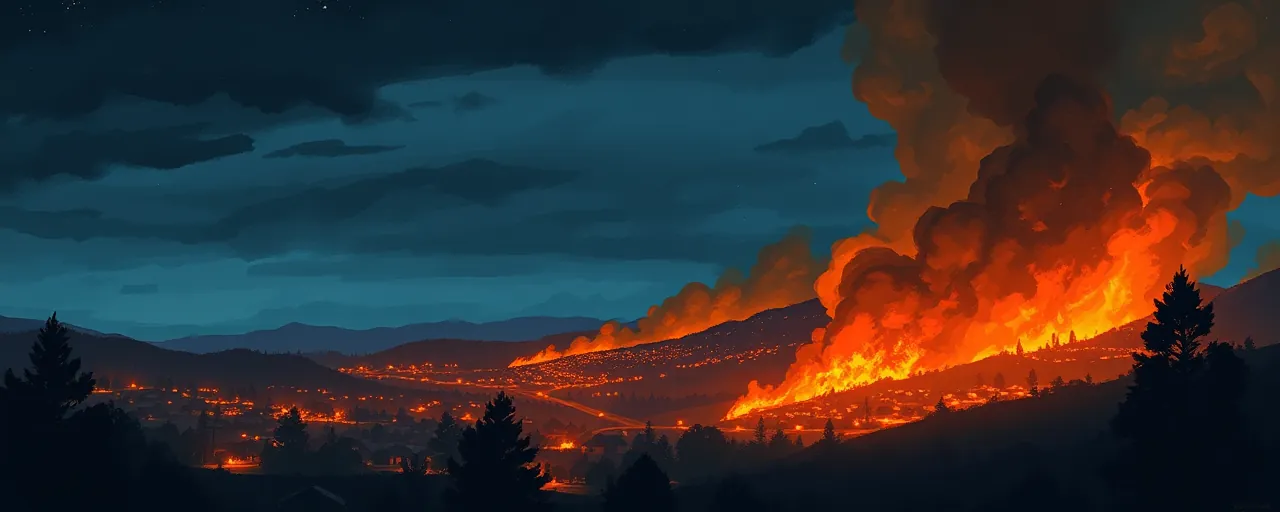A State on Edge as Flames Loom
California is bracing for another brutal wildfire season, and the stakes feel higher than ever. With the scars of January’s Eaton and Palisades fires still fresh in Los Angeles, claiming their place as the state’s second and third most destructive blazes, the urgency to act is palpable. These early 2025 infernos torched homes and rattled nerves, a grim preview of what peak fire season might unleash. Now, the state is rolling out a fresh campaign to get residents ready, banking on practical steps to outsmart the flames.
CAL FIRE, the state’s firefighting backbone, kicked off this effort on April 7, 2025, with a clear call: start at the house and work outward. It’s a message set to flood digital screens, gas pumps, and store shelves across California’s wildland-urban interface zones, where homes kiss flammable brush. The timing aligns with Governor Gavin Newsom’s emergency proclamation last month, a move to speed up projects shielding communities from the growing wildfire threat. But with climate shifts and past policies stacking the deck against easy wins, the question lingers: will it be enough?
Fortifying Homes Against the Blaze
The campaign zeroes in on two proven tactics: home hardening and defensible space. Home hardening means swapping out flammable roofs or vents for fire-resistant materials and sealing gaps where embers might sneak in. Defensible space calls for a five-foot ember-proof buffer around homes, free of dry grass or woodpiles, stretching to 100 feet of trimmed vegetation. Data from over 91,000 home inspections backs this up, showing homes with these upgrades are up to 74% less likely to take a serious hit from wildfires. It’s not theory; it’s survival.
Yet, turning every at-risk home into a fortress is no small feat. The state’s Wildfire Mitigation Program offers cash to retrofit homes, especially for low-income families in fire-prone spots. Still, costs, awareness gaps, and the sheer scale of vulnerable properties slow progress. Outreach in English and Spanish aims to bridge some of that divide, with tools like firePLANNER on ReadyForWildfire.org guiding residents through custom plans. Advocates for community resilience say local buy-in, like Neighborhood Watch-style efforts, could tip the scales further.
A Climate Turning Up the Heat
Wildfires aren’t just a seasonal headache anymore; they’re a year-round beast, juiced by a warming planet. Rising temperatures and bone-dry vegetation, worsened by climate change, made January’s Los Angeles fires 35% more likely, researchers say. Burned areas have tripled since the 2010s, with summer fire seasons stretching longer and hitting harder. By 2050, days ripe for big fires could jump 9%, a forecast that’s got firefighters and policymakers scrambling.
History doesn’t help. Decades of suppressing every spark left forests choked with fuel, ready to explode when flames hit. State efforts, like ramping up prescribed burns and thinning overgrown woods, aim to undo that legacy. California’s poured billions into this fight, doubling CAL FIRE’s budget to $4 billion and building the world’s largest aerial firefighting fleet. Tech’s in the mix too, with AI and satellites spotting smoke faster than ever. But as fires grow fiercer, some wonder if these moves can keep pace.
The Human Factor in Fighting Fire
Getting people on board is the wild card. Surveys show Californians rank wildfires as a top worry, but trust in government fixes hovers low, with just 32% feeling confident in official responses. Education can nudge folks toward action, studies suggest, yet money and access often stand in the way. The state’s betting on a blitz of ads and community outreach to shift that, targeting high-risk zones with practical tips. Local leaders argue grassroots efforts, tapping into neighborly bonds, might do what top-down plans can’t.
On the flip side, the tech push dazzles. AI cameras and satellites catch fires early, slashing detection times by 95%, while drones map blazes without risking lives. California’s got over 1,100 smart cameras in play, and projects like Firesat promise even sharper eyes in the sky. Coordination hiccups and weather glitches can still trip things up, though. It’s a high-stakes dance between human grit and cutting-edge tools, with lives and homes hanging in the balance.
Looking Ahead as Embers Settle
California’s latest campaign is a loud wake-up call, blending hard data with a plea to act fast. The Eaton and Palisades fires proved wildfires don’t wait for summer, and the state’s response, from emergency decrees to beefed-up budgets, reflects that reality. Home hardening and defensible space aren’t just buzzwords; they’re lifelines, backed by science and now pushed with fresh urgency. Still, the gap between intent and impact yawns wide, with climate change and uneven adoption testing every step.
Residents face a choice: dig in now or roll the dice later. The state’s handing out tools, cash, and know-how, but it’s on homeowners to make it stick. As flames loom larger each year, this push could mark a turning point, or just another chapter in a long, smoky saga. Either way, California’s not backing down, and the world’s watching to see if grit and ingenuity can outmatch nature’s wrath.
